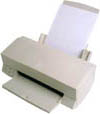The Comma Splice
Recognize a comma splice when you find one.
A comma splice, also called a run-on, occurs when a writer has connected two main clauses with a comma alone. A main clause provides a complete thought, so readers should not find a wimpy comma struggling to join two such powerful clauses.
This is the error:
Main Clause + , + Main Clause.
Here is an example:
Fanning the slice of pizza with a napkin, Jolene waited for it to cool, she had already burned the roof of her mouth with the fried cheese sticks.
The first main clause is Jolene waited for it to cool, and the second is she had already burned the roof of her mouth with the fried cheese sticks. Notice that the two clauses have only a comma connecting them.
Know how to fix a comma splice.
Fixing a comma splice is easy. Just choose one of these four strategies:
Period + Capital Letter
First, you can break the error into two separate sentences, like this:
Fanning the slice of pizza with a napkin, Jolene waited for it to cool. She had already burned the roof of her mouth with the fried cheese sticks.
Comma + Coordinating Conjunction
Another good option is to connect the two main clauses with a comma and a coordinating conjunction:
Fanning the slice of pizza with a napkin, Jolene waited for it to cool, for she had already burned the roof of her mouth with the fried cheese sticks.
Semicolon
You can also use a semicolon, a mark of punctuation as powerful as a period:
Fanning the slice of pizza with a napkin, Jolene waited for it to cool; she had already burned the roof of her mouth with the fried cheese sticks.
Subordination
Your last option is to use a subordinate conjunction. This method reduces one of the two clauses to an incomplete thought:
Fanning the slice of pizza with a napkin, Jolene waited for it to cool since she had already burned the roof of her mouth with the fried cheese sticks.
All four strategies above will fix a comma splice. Each individual error that you correct, however, will require that you analyze all the elements—length of the passage, length of nearby sentences, repetition of words, cadence, etc.—as you pick the best strategy for that specific piece of writing.
©1997 - 2025 by Robin
L. Simmons
All Rights Reserved.
